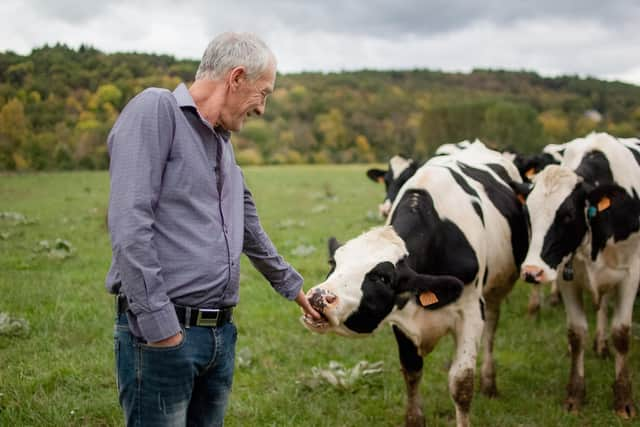Labour availability on NI dairy farms – embracing change
and live on Freeview channel 276
These labour shortages are being experienced in Northern Ireland (NI).
Such is the severity of the situation, that the lack of available labour has been identified as the biggest danger to the local milk pool.
Advertisement
Advertisement
This week in the Milbrook Lodge in Ballynahinch, CAFRE, along with the Ulster Farmers’ Union and Dairy Council Northern Ireland, hosted the inaugural conference ‘building sustainability – a farm labour perspective’.


The conference stemmed from a CAFRE Business Development Group investigation into labour supply and demand on dairy farms.
There has been significant mention of efficiency on dairy farms. For example, feed efficiency, milk from forage, fertiliser/slurry use, but very little conversation about labour efficiency.
Keynote speakers at the conference were:
- Nollaig Heffernan, an expert in leadership and organisational psychology.
Advertisement
Advertisement
- Tom Rawson, co-founder of Evolution Farming Ltd milking 3,800 cows over nine individual units and at peak times employing up to 80 people.
- Rural GP Dr Rebecca Orr, who sits on the steering group for the Farm Family Health Checks team.
CAFRE’s Anna Truesdale briefed the conference on a recent labour study conducted in County Down. It highlighted the challenges facing the industry when it comes to accessing and crucially retaining labour on dairy farms.
The survey found that the dairy farmer works 66 hours per week on average. This is almost double what an average non-farming employee works. Other results indicated that 47% of total hours worked on farm are carried out by the farmer, 27% by family and 26% by employees.
Why are dairy farms struggling to get labour?
Advertisement
Advertisement
Some have blamed the loss of free movement of EU workers following Brexit, but there is more to it than that.
There is now a greater emphasis on the work life balance, and this has led to a reduction of staff entering the dairy sector, which makes the recruitment process more difficult. Staff and potential employees are calling for ‘conventional’ working hours and more time off. There is a need for recognition that in general, staff will not want to work as hard and put in the long hours that the self-employed dairy farmer will do on their own farm.
The conference speakers at the Millbrook provided insight into improving labour productivity from an evolving and diverse workforce; time and people management; efficient and sustainable farming systems and most important of all, how to look after the dairy farm’s number one asset – the farmer.
Policy direction
Farmers in NI are the industry’s most valuable asset, and we need to help protect them and their businesses. This will be achieved by increasing awareness of hours worked, educate/inform the labour market and highlight short and long-term solutions to a more sustainable working day - this could be achieved by the right policy direction.
Advertisement
Advertisement
A combination of government and industry support is needed in the following four key areas;
1. Educating careers advisors schools/job centres so they understand the modern dairy farm.
2. Working with industry on a coordinated marketing campaign targeted at potential recruits.
3. Setting out clearer pathways into farming via apprenticeships, and for these to be properly resourced, provide good on-farm training, involve the industry.
Advertisement
Advertisement
4. Specifically, find ways to fund transport costs for school visits to farms.
The last point is an interesting one. Nollaig Heffernan informed the conference that dairy farmers have on average 172 skills. This is an abundant and remarkable skill set which very few other professions possess. With the necessary support, this could be passed to prospective employees, many of whom may not have considered dairy farming as a career option. However, a change in mind set would be needed as the Arla survey found that 42% of farmers are unwilling to take on someone without an agricultural background.
By embracing change, and making moves to address and improve labour efficiency, dairy farming could be a career choice for a new untapped audience. Thereby future proofing the industry going forward.